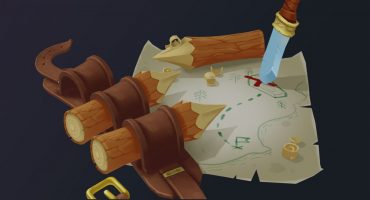Hi! My name is Daniel Peixe, I’m an animator and artist currently working at Walt Disney Animation. My daily job is CG animation but I started my career as a comic book artist and 2D hand drawn animator in London. I’ve been creating Quill illustrations since the “Touch” controllers for the Oculus Rift headset became available in 2016.
I always loved drawing people, and especially caricatures. When I was in London I drew caricatures in the street for a while to earn some extra money.
Inspiration
These VR caricatures were done for the annual Caricature Show here at Walt Disney Animation Studio. Every April Fool’s Day, all the artists are invited to draw caricatures of their co-workers and submit them to the exhibition. The medium is normally paper, 2D drawings but you are free to draw digitally, or using any other tool of your choosing.
Even sculptures are accepted as a caricature in the show. So in April 2017 I already had some practice doing VR paintings, and I decided to submit a VR caricature of John Musker and Ron Clemments. It was the first time someone at the studio did that, and the organizers of the caricature show were super excited about that! They helped me install an Oculus rift station in the main exhibit area so that people could experience the VR scene.
The experience was a success, so this year I decided to repeat but this time drawing 6 different caricatures and arranging them in a single scene. The victims of my caricatures were carefully selected as they are the people in the studio that are super passionate about VR storytelling, and VR art in general.
Process
I based most of the caricatures on a initial sketch done in 2D first on a piece of paper or digitally. Using that sketch as my base I usually import it into Quill and trace over it, that way I get a good base to start from. That initial sketch is 2D but in Quill you can select individual strokes and move them around in 3D space, so my next step is doing just that, until I get a 3D line sketch that’s already suggesting the volume of the final sculpture, even if it only works from certain angles at this point.
Once I have that 3D line sketch I also use the “nudge” tool a lot to bend and deform the strokes I made in the sketch and that helps a ton to give volume and 3 dimensions to the sketch.
Next step would be to start filling up the interior of that sketch with color. I normally start with the straight line tool building the structure of the face, following the anatomy of the face. Then I fill in the surfaces, trying to use always vertical lines to define the profile of the surface. For example, for the cheek area I draw a curve that defines the profile of that cheek and then I use the “duplicate transform” method in Quill to clone that stroke many times with a slight rotation variation. That allows me to achieve smooth surfaces for the different parts of the face.
That technique, also called “lathing” is super useful in Quill to build objects that are round. For example, the torso for the caricatures started out as a simple line describing the profile of the torso, then rotating and duplicating that line many times allowed me to create a “potato” shape that was symmetrical at first, but then using the nudge tool , I hammered it out to the right shape.
Arms are easy to build with with the straight line tool. It was harder to build the sleeves from the T-shirt, which are bell-shaped. But again, the lathe technique comes to the rescue, starting with a simple curve, duplicating, and voila, I get that “bell” shape that I then attach to the arm.
Hands and fingers are the easiest part; the palm of the hand is basically a square volume created with several straight lines, and each finger joint is done in one stroke with the straight line tool.
Then it’s time for painting the little details like creases on the t-shirt, nails on fingers, facial hair etc. Those things become easier and more fun now that the main volumes are created.
Quill doesn’t constrain your strokes to a surface, so that causes some instances that those detail strokes would get partially hidden inside of the main volume. But using the nudge tool was a quick way to fix that problem. Especially for the facial hair detail.
Building things this way in Quill is fascinating, and super fun, almost like when you play with legos, and you try to figure out how to build something using the tools provided. But in Quill you can create your own pieces to build whatever you want, so the limit is the imagination.
Importing the Quill files to Sketchfab couldn’t be easier thanks to the fbx export option. The models keep the same vertex colors and the original flat shaded look. I added a slight vignetting filter to the caricatures – it is great to be able to add those extra post-processing effects to make your models shine. I also love the possibility of sharing my quillustrations in Sketchfab VR! Using the Firefox browser you can access the models in VR with your headset with just one click!









